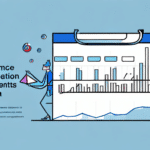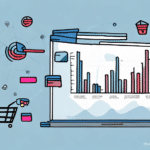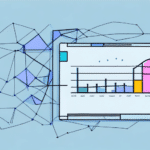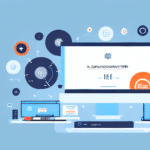Exploring the Difference Between Customer Retention and Churn
In today's competitive business landscape, understanding the dynamics of customer retention and churn is essential for organizational success. Customer retention refers to a company's ability to maintain its existing customer base over a specific period, while churn represents the percentage of customers who discontinue their relationship with the company within the same timeframe. Although these concepts are interconnected, they have distinct impacts on a company's financial health and growth prospects. This article delves into the differences between customer retention and churn, their implications for businesses, and strategies to optimize both.
Why Customer Retention Should Be a Top Priority for Your Business
Prioritizing customer retention offers numerous advantages:
- Cost Efficiency: Acquiring new customers can be up to five times more expensive than retaining existing ones. According to Forbes, investing in retention strategies often yields a higher return on investment.
- Brand Advocacy: Loyal customers often become brand advocates, providing valuable word-of-mouth referrals that attract new customers without additional marketing spend.
- Increased Spending: Existing customers typically spend more over time. A study by Harvard Business Review found that increasing customer retention rates by 5% can increase profits by 25% to 95%.
- Enhanced Revenue and Profitability: Repeat customers are less price-sensitive and more likely to explore new products or services, contributing to sustained revenue growth.
The Financial Impact of Customer Retention
Focusing on retention not only reduces acquisition costs but also stabilizes revenue streams. Businesses with high retention rates often exhibit more predictable financial performance, which is critical for long-term planning and investment.
Understanding Churn: Causes and Consequences
Churn poses significant challenges for businesses, impacting revenue and market position. Key causes of churn include:
- Poor Customer Service: Inadequate support can drive customers to seek alternatives.
- Unmet Expectations: Failure to deliver promised value can erode customer trust.
- Perceived Lack of Value: If customers feel they aren't receiving sufficient value for their money, they are more likely to leave.
- Availability of Alternatives: Increased competition provides customers with more options, heightening the risk of churn.
Consequences of High Churn Rates
High churn rates can lead to:
- Lost revenue and reduced profitability
- Decreased market share
- Negative brand perception
- Lower customer lifetime value
To mitigate these effects, businesses must identify the root causes of churn and implement targeted strategies to address them.
The Importance of Customer Loyalty in Today's Competitive Market
Customer loyalty is a cornerstone of sustainable business success. Loyal customers not only provide repeat business but also contribute to brand strength through positive reviews and referrals. Key benefits of fostering customer loyalty include:
- Increased Revenue: Loyal customers tend to make more frequent and larger purchases.
- Reduced Acquisition Costs: Retained customers lower the need for extensive marketing campaigns.
- Enhanced Brand Recognition: A strong base of loyal customers enhances the overall visibility and reputation of the brand.
Building Customer Loyalty
Effective strategies to build loyalty include:
- Exceptional Customer Service: Providing responsive and personalized support fosters trust and satisfaction.
- Loyalty Programs: Rewarding repeat customers with discounts, exclusive offers, or points systems encourages ongoing engagement.
- Personalized Experiences: Tailoring interactions based on customer data enhances the overall experience and strengthens emotional connections.
Measuring Customer Retention: Key Metrics and Tools
Accurately measuring customer retention is crucial for evaluating the effectiveness of retention strategies. Key metrics include:
- Customer Retention Rate (CRR): The percentage of customers retained over a specified period. Investopedia defines CRR as calculated by: ((E-N)/S) x 100, where E = number of customers at end, N = new customers acquired, and S = number at start.
- Customer Lifetime Value (CLV): The total revenue expected from a customer over their relationship with the company. Forrester emphasizes CLV as a critical metric for informing retention strategies.
- Net Promoter Score (NPS): Measures customer loyalty by asking how likely customers are to recommend the company to others.
- Customer Satisfaction (CSAT) Scores: Assess customers' satisfaction with products or services through surveys.
Tools for Measuring Retention
Several tools can assist in tracking these metrics:
- Customer Relationship Management (CRM) Systems: Platforms like Salesforce or HubSpot CRM help in managing customer data and tracking interactions.
- Analytics Platforms: Tools such as Google Analytics provide insights into customer behavior and retention trends.
- Survey Tools: Platforms like SurveyMonkey and Typeform facilitate the collection of CSAT and NPS data.
How to Calculate Your Churn Rate and Improve It
Understanding your churn rate is vital for assessing your retention efforts. The churn rate is calculated as follows:
Churn Rate = (Number of Customers Lost During Period / Total Customers at Start of Period) x 100
Improving churn rate involves addressing the underlying causes. Effective strategies include:
- Enhancing Customer Service: Implementing training programs to improve responsiveness and empathy.
- Offering Personalized Incentives: Providing rewards tailored to individual customer preferences.
- Increasing Customer Engagement: Regularly interacting with customers through various channels to build stronger relationships.
- Improving Product or Service Quality: Ensuring offerings meet or exceed customer expectations.
Continuous Monitoring and Adaptation
Churn reduction is an ongoing process. Regularly analyzing churn data helps identify emerging trends and potential areas for improvement. Utilizing predictive analytics can also anticipate churn, allowing proactive intervention.
Strategies for Increasing Customer Retention and Reducing Churn
Implementing effective strategies can significantly enhance retention and minimize churn:
- Exceptional Customer Experiences: Creating memorable interactions that exceed customer expectations.
- Personalized Offerings: Customizing products and services based on individual customer insights.
- Regular Communication: Maintaining consistent and meaningful contact through newsletters, updates, and personalized messages.
- Loyalty Programs: Designing programs that reward repeat business and incentivize continued engagement.
- Referral Incentives: Encouraging satisfied customers to refer new clients through attractive rewards.
Building Emotional Connections
Fostering an emotional bond between the customer and the brand increases loyalty and reduces the likelihood of churn. Storytelling, brand values alignment, and community building are effective methods to achieve this connection.
The Role of Customer Experience in Retention and Churn Prevention
The overall customer experience (CX) is pivotal in influencing retention and churn rates. A positive CX can lead to higher satisfaction, loyalty, and advocacy, while a negative experience can drive customers away. Key elements of CX include:
- Customer Service: Responsive and effective support systems.
- Product Quality: Reliable and high-quality offerings that meet customer needs.
- User-Friendly Interfaces: Easy navigation and seamless interactions across all touchpoints.
- Consistent Branding: Uniform messaging and experience across all channels.
Personalizing Customer Interactions
Personalization enhances the customer experience by making interactions more relevant and meaningful. Leveraging customer data to tailor communications, recommendations, and services can significantly boost satisfaction and loyalty.
Leveraging Technology for Enhanced CX
Investing in advanced technologies can streamline operations and improve the customer journey. Tools such as IBM Watson Assistant for AI-driven support or Zendesk for customer service management can elevate the overall experience.
Leveraging Technology to Enhance Customer Retention Efforts
Technology plays a crucial role in modern customer retention strategies. Key technological tools include:
- Customer Relationship Management (CRM) Systems: Platforms like Salesforce and HubSpot CRM help manage customer interactions, track behavior, and personalize communications.
- Marketing Automation: Tools such as Marketo and Mailchimp automate marketing campaigns, ensuring timely and relevant engagement with customers.
- Data Analytics Platforms: Solutions like Tableau and Microsoft Power BI provide insights into customer behavior, preferences, and trends.
- Chatbots and AI: Implementing AI-driven chatbots, such as those offered by Intercom, can provide instant support and personalized recommendations.
Utilizing Customer Data for Retention
Effective use of customer data allows businesses to anticipate needs, personalize interactions, and proactively address potential issues. Data-driven strategies enable more precise targeting and improved customer satisfaction.
Enhancing Loyalty Programs with Technology
Technology can streamline loyalty programs, making them more efficient and appealing. Platforms like Yotpo and Bulger Loyalty offer comprehensive solutions for managing rewards, tracking customer points, and delivering personalized incentives.
Case Studies: Examples of Successful Customer Retention Strategies and Tactics
Examining successful case studies provides valuable insights into effective retention strategies:
Amazon
Amazon excels in customer retention through personalized product recommendations and a seamless user experience. Their Prime membership offers added value through benefits like free shipping and exclusive content, fostering loyalty and repeat purchases.
Starbucks
Starbucks' Rewards Program incentivizes repeat business by offering free products, discounts, and personalized offers based on purchase behavior. This program not only increases retention but also enhances customer engagement.
Emirates Airlines
Emirates distinguishes itself with high-quality customer service, ensuring a superior travel experience. Their loyalty program, Skywards, rewards frequent flyers with miles, upgrades, and exclusive benefits, promoting long-term loyalty.
Netflix
Netflix retains customers by offering a vast library of personalized content, easy-to-use interfaces, and flexible subscription plans. Their data-driven approach allows for tailored recommendations that keep users engaged and subscribed.
Common Mistakes to Avoid When Managing Retention and Churn
Avoiding common pitfalls is crucial for effective retention management:
- Neglecting Customer Service: Poor support can drive customers away. Ensuring responsive and effective customer service is paramount.
- Offering Poor Value for Money: Products or services that don't meet customer expectations can lead to dissatisfaction and churn.
- Failing to Communicate Effectively: Inconsistent or irrelevant communication can weaken customer relationships.
- Lacking Personalization: Generic interactions fail to engage customers on a personal level, reducing loyalty.
- Ignoring Customer Feedback: Not addressing customer concerns can result in unresolved issues and increased churn.
Addressing Common Mistakes
To mitigate these mistakes, businesses should:
- Invest in comprehensive training for customer service teams.
- Continuously assess and enhance the value proposition of their offerings.
- Implement consistent and targeted communication strategies.
- Leverage customer data to personalize interactions.
- Actively seek and respond to customer feedback through surveys and direct communication.
The Future of Customer Retention: Trends, Predictions, and Best Practices
The landscape of customer retention is evolving with advancements in technology and changing consumer expectations. Key trends shaping the future include:
- Increased Automation: Automation tools will streamline retention processes, allowing for more efficient and scalable strategies.
- Enhanced Personalization: Leveraging AI and machine learning to deliver hyper-personalized experiences.
- AI-Powered Engagement: Chatbots and virtual assistants will provide instant, tailored support to customers.
- Advanced Data Analytics: Utilizing big data to gain deeper insights into customer behavior and preferences.
- Omnichannel Experiences: Providing a seamless and consistent customer experience across all channels and touchpoints.
Best Practices for Future-Proofing Retention Strategies
To stay ahead, businesses should adopt the following best practices:
- Embrace Technology: Invest in advanced tools that facilitate personalized and efficient customer interactions.
- Focus on Customer-Centricity: Prioritize the needs and preferences of customers in every aspect of the business.
- Stay Agile: Continuously adapt strategies based on evolving market trends and customer feedback.
- Invest in Employee Training: Equip teams with the skills necessary to deliver exceptional customer experiences.
- Foster a Loyal Community: Build a community around the brand through engagement initiatives and social interactions.
In conclusion, understanding and effectively managing customer retention and churn are vital for sustaining business growth and profitability. By leveraging data-driven strategies, investing in technology, and prioritizing exceptional customer experiences, businesses can reduce churn rates, enhance customer loyalty, and achieve long-term success.




















